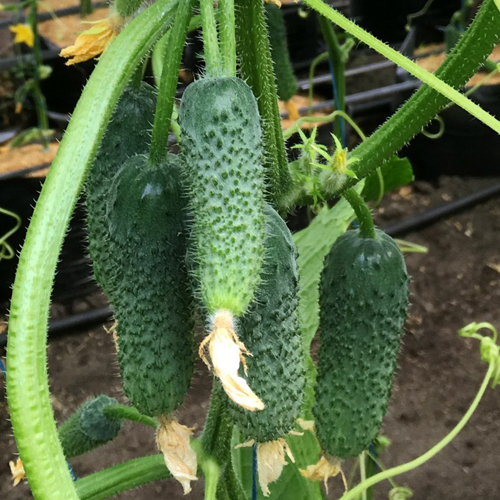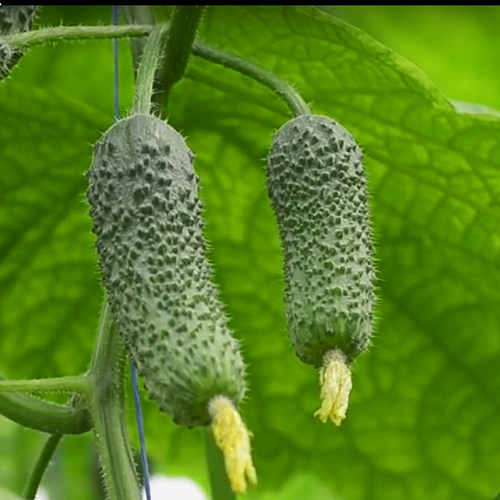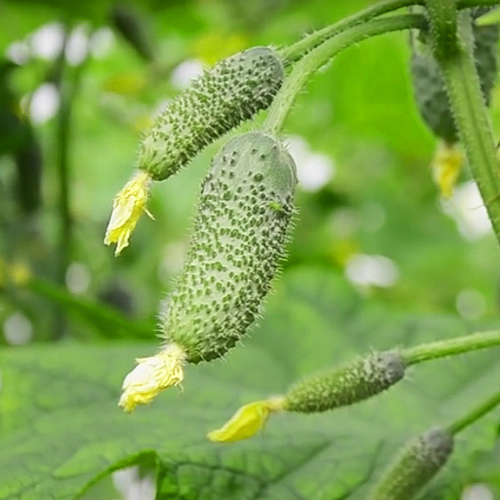Cucumber variety Arctic (F1)
Our vegetable growers are accustomed to Dutch seeds, so few people are interested in other producers. And in vain. After all, the seed material produced by the Korean company NongWoo Bio is not inferior in quality, and besides, the price is lower. The company recently introduced a new variety called Arctic (tentatively called Arena). The novelty is not yet listed in the State Register. But she interested not only ordinary gardeners, but also farmers who grow vegetables on an industrial scale. The variety is excellent for cultivation in greenhouses, therefore it can be grown in any region of Russia. The first reviews suggest that this cucumber is a real hard worker. The novelty is a hybrid, therefore it is necessarily marked with the F1 marking.

Description
The plant is indeterminate, about 2 meters high. The root system is powerful. The stem is strong, with short internodes, well leafy. The petioles are long. Leaves are medium-sized, cordate-five-lobed, with a medium wrinkled surface, green in color. In each internode of the Arctic, 1 - 2, sometimes 3 female flowers are predominantly formed.
Zelentsy are attractive, small, cylindrical in shape. The length of the cucumber is about 10 - 12 cm, the diameter is 3.5 - 4.0 cm. The skin is of medium thickness, elastic, strong, bright green color, without stripes. The surface is small-tuberous, the tubercles are often located, the pubescence is light. The pulp of the variety is of good density, firm, tender, juicy, with a real cucumber aroma, without voids, does not contain bitterness. Good taste. There are few seeds, they are small and are in the stage of milky ripeness.

Characteristics
- The Korean Arctic belongs to the early maturing hybrids. The period from emergence to the beginning of fruiting is a record 33 days, in the most unfavorable conditions this period can last up to 42 days. Such early maturity allows the use of the crop in an extended turnover, making it profitable for industrial cultivation;
- the yield of the cucumber is very good due to the short internodes and the bunch type of fruiting. In addition, the overall indicator increases the good regeneration of the plant, which is not inherent in all varieties. It consists in the fact that after the first wave of fruiting, despite the fact that the greens are still ripening in the upper part of the bush, the process of re-formation of ovaries begins in the lower part. High yields have become another parameter, thanks to which our hero is popular in industrial cultivation;

- the immunity of the hybrid is very good. High resistance to common diseases of culture - fusarium, tobacco mosaic virus, downy mildew. Resistance to pests is also noted - whitefly, spider mites, aphids;
- The Arctic is resistant to temperature extremes, especially to cold snaps;
- self-pollination is another plus that allows a cucumber to tie and form a crop on its own, which is especially appreciated in closed-type greenhouses;
- the variety's transportability is at a high level, the presentation of the cucumbers will not suffer even after long-term transportation. Keeping quality is good;
- the way of use is universal. The early harvest is most often used in its natural form, but the fruits have shown excellent pickling qualities and suitability for canning.
Agrotechnics
It is recommended to grow the Arctic by seedling or by sowing seeds directly into the ground in greenhouses. In heated greenhouses, you can get a harvest of cucumbers as early as April; for this, seeds are planted for seedlings in the second decade of February. Seedlings are transplanted after about 21 days.Bushes of this variety must be tied up on a trellis and formed into 1 stem. The culture is demanding on watering and timely feeding, without this good fruiting it will not work. It is especially important to feed the plant during the period of intense fruit production. As a fertilizer, you can use mineral complexes - nitrogen at the time of growth, phosphorus-potassium during the period of crop formation. Organic will do. The types of dressings can be alternated. Due to its good cold resistance and excellent disease resistance, the variety is successfully grown in the second turn. Despite the fact that during this period the temperature drops, the plants still need to be well watered and fertilized.
The Arctic hybrid is not yet very well known among ordinary vegetable growers, but in industrial cultivation it is used with great success due to its rare ability to regenerate, which means its high productivity. The variety has proven itself not only in protected ground, but also in the open, it also shows a decent result. Good immunity of the variety allows you to reduce the number of chemical treatments and get an environmentally friendly product. No shortcomings were found during the cultivation period. The disadvantage can be considered the need for tying and forming a plant, and a big disadvantage is the impossibility of self-collection of cucumber seeds.








